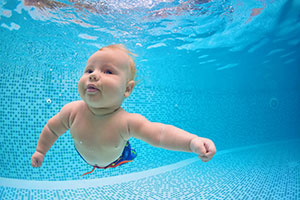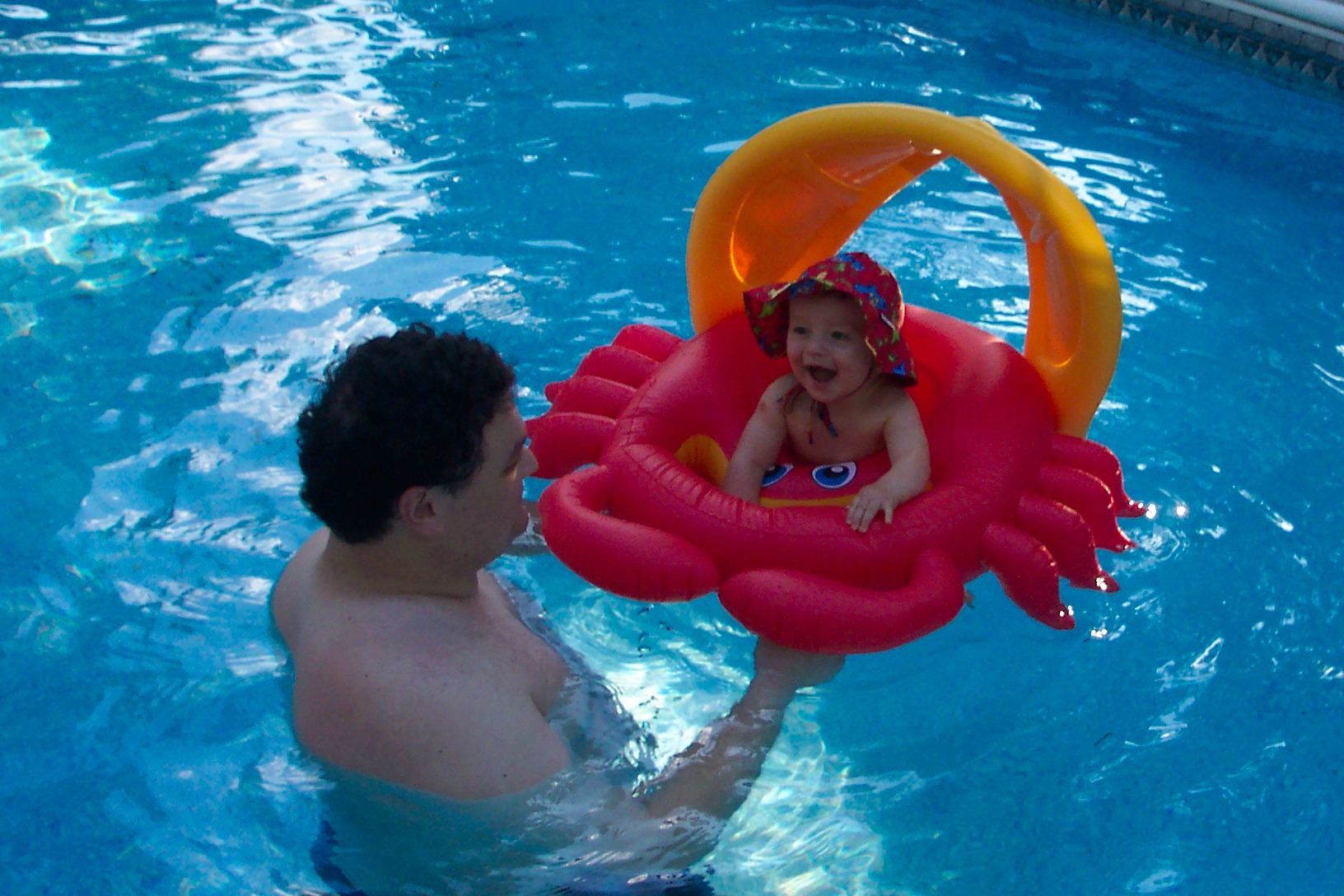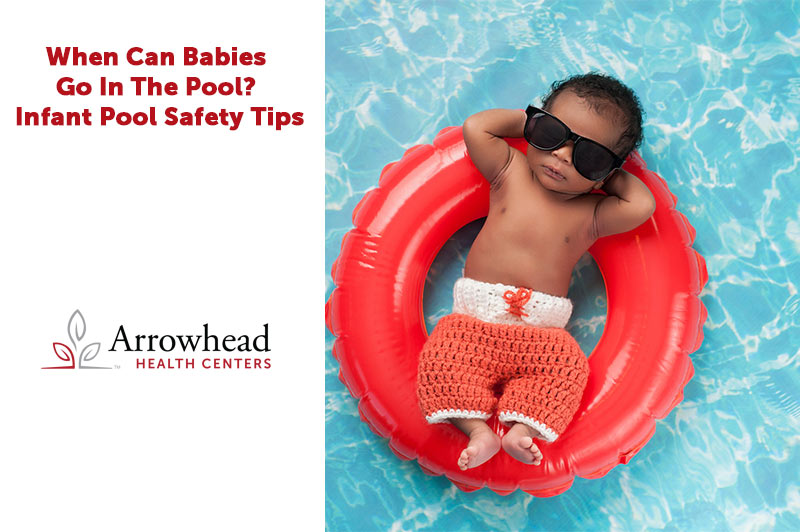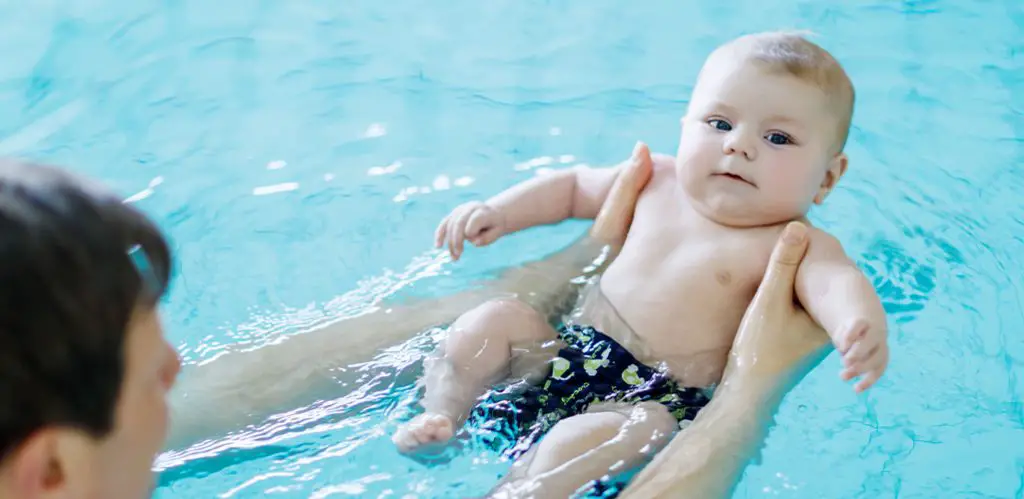Babies can go in a chlorine pool when they are at least six months old and have proper supervision. Are you wondering when it is safe for your baby to start swimming in a chlorine pool?
We have the answers you need. While swimming can be a fun and enjoyable activity for the whole family, it’s crucial to ensure the safety and well-being of your little one. We will discuss when babies can go in a chlorine pool and what precautions you should take to protect them.
Understanding the age and guidelines for introducing your baby to a swimming pool is essential to creating a positive and safe experience. So, let’s dive in and learn more about when your baby can start enjoying the wonders of a chlorine pool.

Credit: arrowheadhealth.com
Understanding Baby Development
Babies develop at different rates, hitting their growth milestones at their own pace. It’s important for parents to understand the key developmental stages that affect a baby’s readiness for chlorine pools. By recognizing these factors, caregivers can make informed decisions about safely introducing their little ones to the water.
Factors Affecting Baby’s Readiness For Chlorine Pools
There are several factors to consider before taking a baby in a chlorine pool. These can include their age, physical development, and overall health. Factors such as chemical sensitivities should also be taken into account. It’s important to consult with a pediatrician to determine if a baby is ready to venture into the chlorinated waters.
Developmental Milestones To Consider
Developmental milestones, such as neck control, kicking and splashing, and overall motor skills, play a crucial role in determining a baby’s readiness for the pool. Additionally, a baby’s ability to regulate body temperature and show signs of enjoyment in water activities is essential. Parents should keep a close eye on their little one’s readiness by observing their response during bath time and other water-based activities.

Credit: havesippywilltravel.com
Safety Guidelines For Babies In Chlorine Pools
When introducing your baby to a chlorine pool, wait until they are at least six months old. Ensure the pool is well-maintained with proper chlorine levels, use swim diapers, and always supervise your baby closely to prevent accidents. Following these safety guidelines will help create a safe and enjoyable swimming experience for your little one.
Consulting Pediatrician Beforehand
Before taking your baby to a chlorine pool, consulting a pediatrician is essential. They can provide personalized advice based on your baby’s health, age, and individual needs. It’s crucial to ensure that your baby is ready for this experience without any potential risks.
Key Precautions To Take
When introducing your baby to a chlorine pool, it’s important to take certain precautions to ensure their safety and well-being. Here are some key guidelines to follow:
- Ensure the chlorine levels in the pool are within the safe range recommended for babies.
- Always use swim diapers specifically designed for pool use to minimize the risk of accidents.
- Teach your baby basic water safety skills and always supervise them closely while in the pool.
- Consider using a baby-friendly sunscreen to protect your baby’s delicate skin from the sun’s harmful rays.
- Gradually introduce your baby to the pool environment to gauge their comfort and response.
Choosing The Right Pool And Equipment
Babies can safely go in a chlorine pool once they are at least six months old. It is important to closely monitor them and ensure they are properly protected with swim diapers and sunscreen.
In this section, we will focus on
for your baby’s safety.
Pool Features Suitable For Babies
shallow areas
warm water
adequate shade
Essential Baby Pool Gear
Swim diapers
floatation device
Sun hats and UV protective clothing

Credit: arrowheadhealth.com
Introducing Babies To Chlorine Pools
Babies can safely be introduced to chlorine pools once they turn six months old. It is important to ensure their safety by using proper swim diapers and maintaining appropriate water temperature and chlorine levels.
Introducing your baby to a chlorine pool can be an exciting and fun experience for both of you. However, it’s important to ensure that their first pool experience is a positive and safe one. Gradual introduction strategies and following a few helpful tips can help make the transition smooth and enjoyable for your little one.
Gradual Introduction Strategies
When introducing your baby to a chlorine pool, it’s best to take a gradual approach. Start by allowing them to dip their feet or sit on the poolside, slowly getting them acquainted with the water environment. This gradual introduction can help build their confidence and familiarity with the pool.
Next, you can progress to holding your baby in your arms while standing in shallow water. Allow them to splash their feet and hands, encouraging them to explore the water at their own pace. This step-by-step process helps them adjust to the sensation of being immersed in water gradually.
Once your baby feels comfortable with the previous stages, it’s time to let them experience the joy of floating in the water. Using a flotation device specifically designed for infants, you can safely support and guide them through their first experiences of floating in a chlorine pool.
Tips For Baby’s First Pool Experience
To ensure a smooth and enjoyable first pool experience for your baby, here are some helpful tips:
- Choose the right time: Opt for a time when the pool is less crowded and avoid days when the water may be too cold.
- Use appropriate swim diapers: Invest in swim diapers that can effectively contain any accidents, keeping the pool clean.
- Protect their delicate skin: Apply a baby-safe sunscreen with a high SPF to shield their skin from harmful UV rays.
- Maintain close supervision: Always stay within arm’s reach of your baby while they are in the pool to ensure their safety.
- Keep the pool temperature regulated: Make sure the pool water is at a comfortable temperature for your baby to prevent any discomfort.
By following these gradual introduction strategies and helpful tips, you can ensure a memorable and enjoyable pool experience for your baby. Remember to prioritize their comfort, safety, and enjoyment while introducing them to the exciting world of a chlorine pool.
Signs Of Distress And Emergency Protocol
Discover the signs of distress and emergency protocol to ensure safety when considering introducing a baby to a chlorine pool. Understanding the appropriate age and precautions is crucial for the child’s well-being in a chlorine pool. Always consult with a pediatrician before making any decisions regarding a baby’s exposure to chlorine pools.
Recognizing Signs Of Discomfort
Immediate Actions In Case Of Emergency
Maintenance And Hygiene Practices
Parents often wonder when their baby can safely swim in a chlorine pool. It’s best to wait until the baby is six months old and has received their vaccinations to minimize the risk of infections. Before introducing your baby to a pool, ensure the water is properly maintained with the correct chlorine levels and consider using a swim diaper for added protection.
Maintenance and Hygiene Practices are crucial when considering when a baby can go into a chlorine pool. Keeping Pool Clean and Chlorine Levels Safe is essential for the well-being of the little ones. It is important to maintain a proper pool hygiene regimen to ensure the safety and health of the babies.
Keeping Pool Clean And Chlorine Levels Safe
Maintaining the cleanliness of the pool is vital. Regularly scrubbing and vacuuming the pool surface can help to remove dirt and contaminants. The use of pool skimmers or filters can also help in removing debris and maintaining cleanliness. Additionally, it is important to regularly check and maintain proper chlorine levels to prevent the growth of harmful bacteria and pathogens. Post-pool Hygiene for Babies also plays a critical role in ensuring the safety of babies in a chlorine pool.
Post-pool Hygiene For Babies
After exiting the pool, it is essential to rinse off the baby’s skin to remove any residual chlorine. This is important as chlorine can cause skin irritation and rashes in babies. Changing the baby’s outfit and diaper immediately after swimming is also crucial to prevent skin irritation and infections. Moreover, administering a warm bath to the baby after swimming can help in removing any remaining chlorine and keeping the baby’s skin healthy. Maintaining a clean and safe pool environment, as well as practicing proper post-pool hygiene for babies, are essential factors to consider before allowing a baby to go in a chlorine pool.
Conclusion
In summation, introducing a baby to a chlorine pool should be done cautiously. Ensuring proper hygiene and safety measures is crucial for the baby’s well-being. Consulting with a pediatrician and following guidelines can lead to a positive water experience. Always prioritize the baby’s health and comfort when deciding on pool time.
Enjoy the pool responsibly and create lasting memories with your little one.





